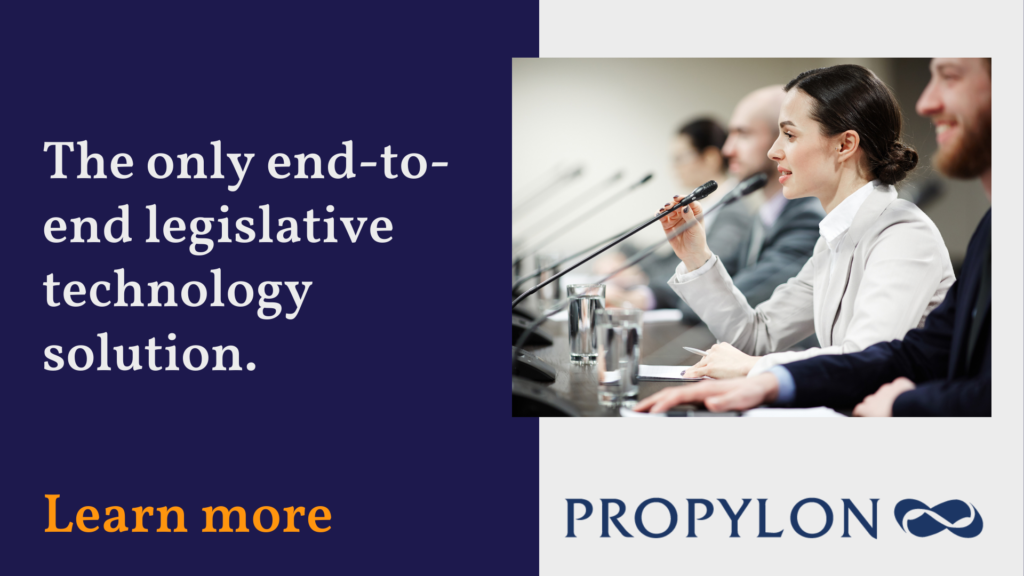In December 2021, US President Joe Biden signed an Executive Order on Transforming Federal Customer Experience and Service Delivery to Rebuild Trust in Government. The Executive Order (EO) details 36 customer experience (CX) improvement commitments across 17 federal agencies, particularly at the moments that matter the most in people’s lives.
The EO directs federal government agencies to modernize their services and reduce the administrative burdens on the public by designing and delivering new online tools. Broader discussion of this EO has touched on to what extent the EO is a mandate for change and to what extent it is a call to action for agency leaders and those in the federal IT community to accelerate their CX efforts.
Technology providers have a role to play in ensuring that IT systems serve governments in serving the public. However, many current legislative IT systems have grown organically, often in a siloed fashion which is reflected in the CX on the publishing endpoint of these systems.
Technology should modernize government while also respecting time-honored processes; it should also be user-centric to enable staff to do their jobs without disruption from tooling that is not built to meet their needs. What are some other key aspects to look out for when selecting a legislative solution to enable more efficient government services?
Technology providers have a critical role to play in ensuring that IT systems serve governments in serving the public.
Information management
Effective management of information is key to powering efficient, more digitized government services. Legacy legislative solutions can make it difficult to even locate a bill status.
Robust content management is essential. This is the foundation for dealing with complex, inter-related content sets that are in constant flux and which need to enable full, real-time visibility over, for example, a bill status.
The technology that underpins government services should also be user-centric to enable staff to do their jobs without disruption from tooling that is not built to meet their needs.
APIs
Modern technology solutions should provide API formats to integrate with software in different IT contexts as well as third-party applications – for example, facilitating greater integration with communication channels like social media.
APIs, and software solutions more generally, that facilitate open data can also help drive more transparency in the legislative process. In the past, if a citizen really wanted to know what was going on in the state capitol, they had to attend committee meetings, read all the proposed amendments, etc. Today, API-driven technology has the potential to allow citizens to engage digitally with the legislature by enabling states to push information to their websites.
Good UX
Customer service and user experience are baked into this EO: “We must use technology to modernize Government and implement services that are simple to use, accessible, equitable, protective, transparent and responsive for all people of the United States.”
Good UX starts with a deep understanding of your users. Utilizing a framework like Jobs To Be Done guides government technology solutions in delivering user-centric capabilities.
Jobs To Be Done theory is particularly associated with the late Clayton M. Christensen, regarded as one of the leading thinkers on innovation. According to Christensen, when we buy a product, we are ‘hiring’ it to get a job done.
“When we buy a product, we essentially ‘hire’ something to get a job done. If it does the job well, when we are confronted with the same job, we hire that same product again. And if the product does a crummy job, we ‘fire’ it and look around for something else we might hire to solve the problem.”
Clayton M. Christensen
websites built for the modern era
It goes without saying that websites are a critical communication channel in today’s digital-oriented world. Structure, layout, and design can all be obstacles to accessing key information. As UX/usability expert, Steve Krug puts it in his book Don’t Make Me Think: A Common Sense Approach to Web Usability: “It doesn’t matter how many times I have to click, as long as each click is a mindless, unambiguous choice.”
Indeed, studies into trust and distrust on the web have long suggested that distrust is mostly an effect of graphical (e.g. complex layout) and structure design issues of a website.
In addition to design, features like push notifications and alerts offer website users the means of finding the information that matters to them without needing to try too hard to find it. This is another step towards helping alleviate the “time tax” burden imposed on the public in trying to access information.
With global smartphone adoption at over 78 percent in 2020, it comes as little surprise that the EO also highlights mobile and accessibility in general.
As well as being compliant with the Americans with Disabilities Act (ADA), websites should be mobile-responsive and pose no accessibility barriers. For example, they should be keyboard-navigable.
With AI and other technological developments powering us towards a more automated age, federal agencies and CIOs need a partner that can support them into the future.
Improving the legislative UX into the Future
In order to provide more effective, efficient, and transparent services, and build trust with citizens, government must also have a technological underpinning to power such services. With AI and other technological developments powering us towards a more automated age, federal agencies and CIOs need a partner that can support them into the future as they execute on these actions.
We at Propylon welcome the renewed focus on utilizing technology to implement services that are simple to use, equitable, protective, transparent and accessible for all. Our LWB 360 solution for governments and legislatures has long focused on the importance of accessible websites, and open data. We have long been advocates of tools that aid transparency and which assist government agencies in introducing efficiencies through automation when it comes to managing and publishing legislative content.




